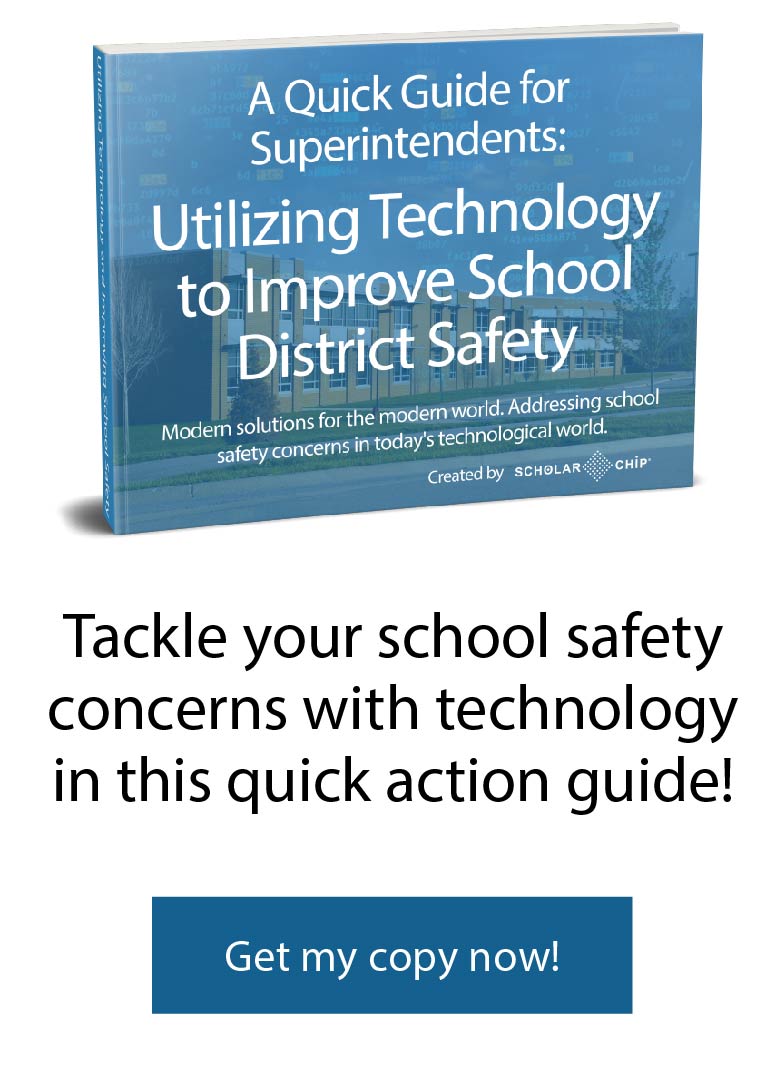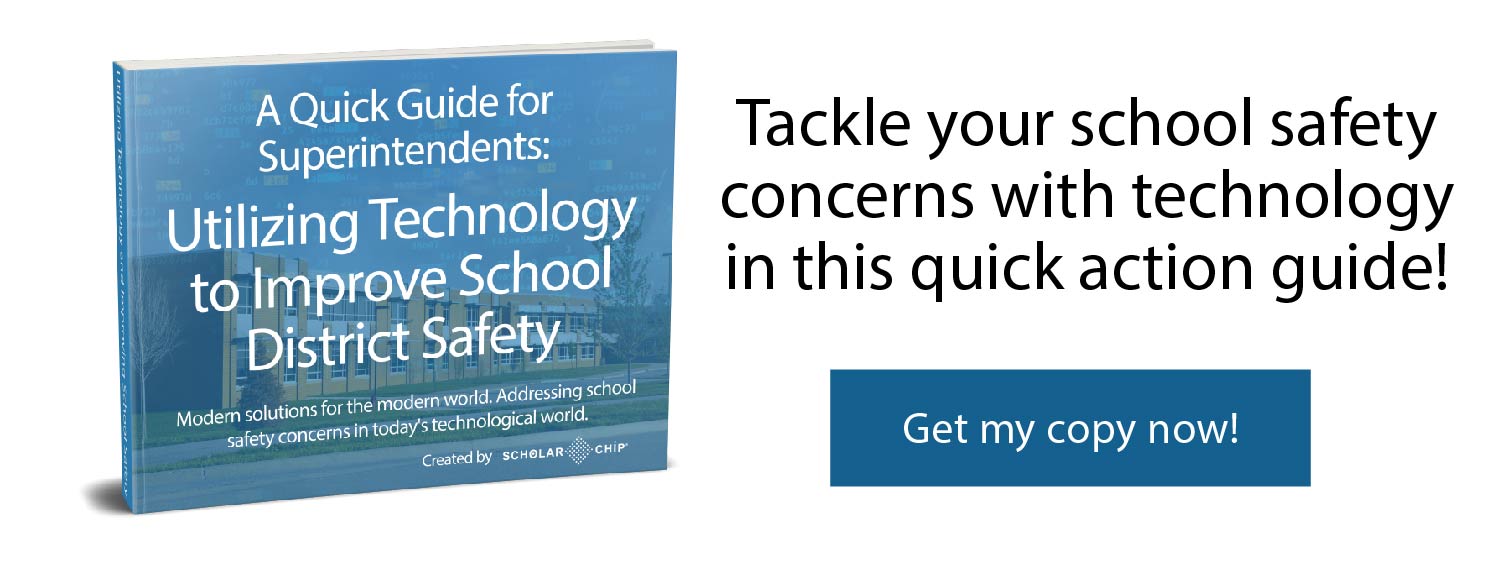Targeted attacks and school shooters seem to come out of nowhere, but in reality, these violent acts can come from people a lot closer to the school system that one thinks. This unpredictability feeds the fears of parents, students and the extended school community; concerns that are intensified by media attention and political agendas. While statistics show the risk of an armed attack is negligible, the horrific nature of such attacks has forced school leaders to prioritize school security.
What We Know About Threats to School Safety
Following the 1999 Columbine High School shooting, the U.S. Department of Education and the Secret Service launched the Safe School Initiative to study incidents of school violence and identify the proactive interventions that would be effective. The study determined there exists no “useful profile” of students who turn to violence. Aside from gender — all perpetrators were male — researchers found that the attackers came from different age groups, races and family situations. Most did not have notable behavior problems in school, and most were doing well academically. However, the report found that in the majority of cases attacks were not sudden and impulsive. Attackers made plans and often communicated their intent to others.
Despite the attention given to shootings, the most prevalent threats to student and personnel safety are bullying, physical fighting among students and threats of physical violence against teachers. School administrators must balance the need to secure buildings, assuage public fears and address the predominant threats to safety while working with finite resources.
According to the National Center for Educational Statistics, most schools have responded to the demand for increased security by restricting building access, requiring staff and faculty to wear ID badges, adjusting dress codes to eliminate clothing and backpacks that could potentially hide weapons, installing surveillance cameras and hiring resource officers. While these measures provide a sense of security, they have not proved to be effective in preventing targeted attacks as incidents of school shootings have continued with alarming regularity over the past three decades. Security cameras and armed guards negatively affect a school’s atmosphere. The National Association of School Psychologists points to studies that suggest these measures may contribute to increased violence by creating a “street culture” that emphasizes self-protection. Less overt actions may be more effective in securing buildings.
Utilize Smart ID Card Technology to Control Building Access
At the start of the school day and again at dismissal, students, staff and faculty enter and exit buildings en masse, making it very difficult to identify individuals that pose a threat. Most schools station greeters at the main entrance and position monitors in the hallways, but this is an imperfect system. Laminated ID badges, stick-on name tags, and handwritten hall pass provide little security. Before the first bell rings, and teachers take attendance, no one knows exactly who is in the building yet.
ID cards with barcodes and magnetic strips are an improvement, but barcodes may be duplicated, and magnetic strips do not scan. Both have limited functionality and lack durability. But, Smart ID cards are embedded with a microchip that holds an identifying ID number. Card holders need only tap their cards at a card reader to connect to a host computer system and check into school. Districts may expand the system by installing card readers at classroom doors and in group meeting areas such as the auditorium and cafeteria. Mobile applications make it possible to record attendance on field trips, on the school bus and at sporting and other extracurricular events.
With this system, school personnel will have access to attendance data in real time. In the event of an evacuation or lockdown, this information is vital. Automated attendance systems relieve teachers of having to occupy themselves with manually entering data at the start of class, and these systems reduce incidents of human error that corrupts data.
Verify the Identity of New School Visitors with an Integrated Visitor Management System
Throughout the day, parents, volunteers, substitutes and vendors need access to school buildings. In smaller districts, stationing a greeter at the entrance may deter unwelcome guests. However, even security personnel closely connected to the school community cannot be aware of all situations such as orders of protection, parental custody issues, and sex offender status.
A visitor management system that is integrated with the school’s SIS and has the capability to scan driver’s licenses and will send up red flags when their information is matched across a registered sex-offender database.
Block Unauthorized Access to Restricted Areas
The RAND study on school safety found as one would expect, most incidents of bullying and other victimizations occur in isolated areas of the school building. With smart card technology, off-limit rooms and areas of the building may be locked, with only authorized personnel able to access these areas using their smart IDs as a key. Door access systems are centrally managed so that administrators may permit or block access from a remote location.
Improve School Climate for Stronger Security
A school’s climate is the day-to-day atmosphere of a building. Over time, a school’s climate builds a culture of norms and behaviors. A supportive, inclusive environment encourages communication between students and teachers and lessons feelings of isolation, all factors identified in the Safe School Initiative Report as necessary for reducing threats of violence in schools.
Technology can facilitate this climate as smart IDs hand students the responsibility for checking themselves in — it makes students accountable and gives them a level of autonomy that creates a sense of ownership in the school. Integrated data systems provide for better communication within the school and between the school and parents, keeping the entire community up to date with news and information. These proactive interventions not only make schools safer, but they also help create a positive community for learning.
Harness Technology for Effective Behavior Modification Programs
Throughout the school year, students have many teachers and interact with different administrators, and while schools may establish clear behavior expectations, behavior problems are not always consistently documented. Handwritten notes may never leave a teacher’s records, and referrals to administrators may collect in a manila file folder, leaving patterns of problematic behaviors undetected.
A computerized behavior management system allows all behavior incidents and concerns, along with interventions and outcomes of behavior modification plans to be collected in one space so that troubling patterns may be quickly identified. These same systems may include videos and software for students designed to test their understanding of concepts such as honesty and cooperation and teach students the skills they need to modulate their behavior.
Integrate Data Management Systems
Innovations in educational technology and information management systems have come at a fast pace. Schools that invested in SIS programs, administrative programs, and security systems as they became available are now dealing with outdated software and servers that are nearing capacity. These disparate systems do not communicate with each other and cannot provide the complete data sets needed to identify security risks and inform decisions.
Combining student information, attendance and visitor management, admin functions, behavior management, and security systems allow administrators to access and control information from a single dashboard. Information is in real-time and integrated with communication and emergency notification systems, an important security measure as identified by the RAND Report Role of Technology in Improving K–12 School Safety. Modern systems store data in the cloud where it is safe from physical damage to school servers and accessible from remote locations.
School leaders can implement proactive interventions on several levels —securing the physical buildings, monitoring student behavior and attendance, and improving internal and external communications. Integrating these systems provides an umbrella of security without creating an unwelcome, prison-like environment.
ScholarChip is an all-in-one, platform solution to help reduce school threats and address the important issues surrounding school safety. Data from students, faculty, and stakeholders are leveraged to manage school access, attendance, and behavior management through the platform tools to increase safety and promote the campus climate schools are looking for.
If you would like to become proactive in reducing the risk of school threats for your campuses, feel free to reach out to ScholarChip today for a 1-on-1 walkthrough with one of our solution specialists on how we can help!


